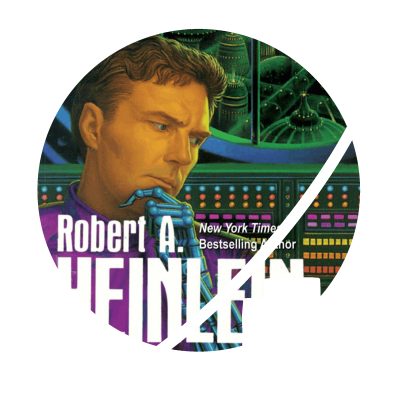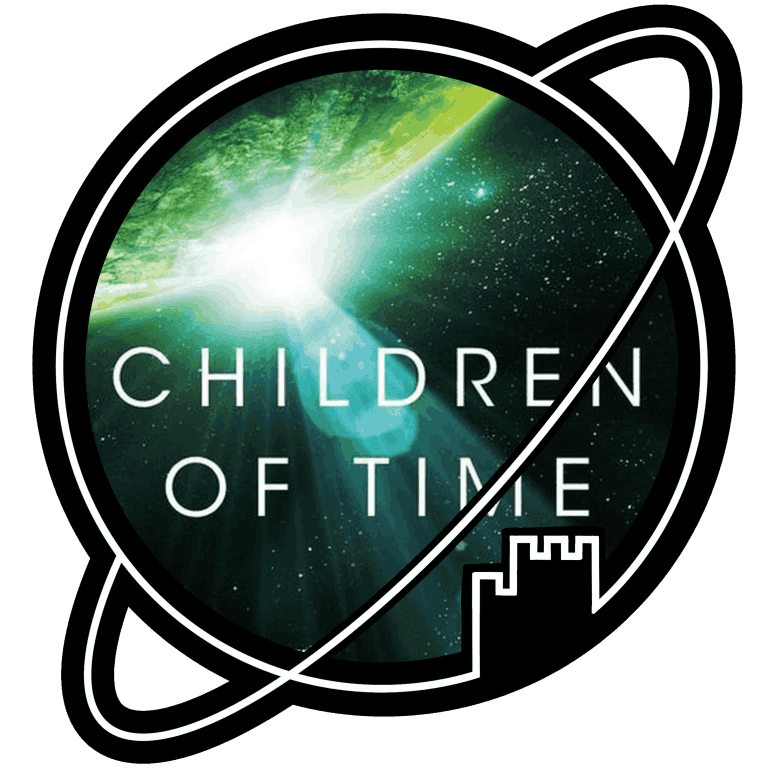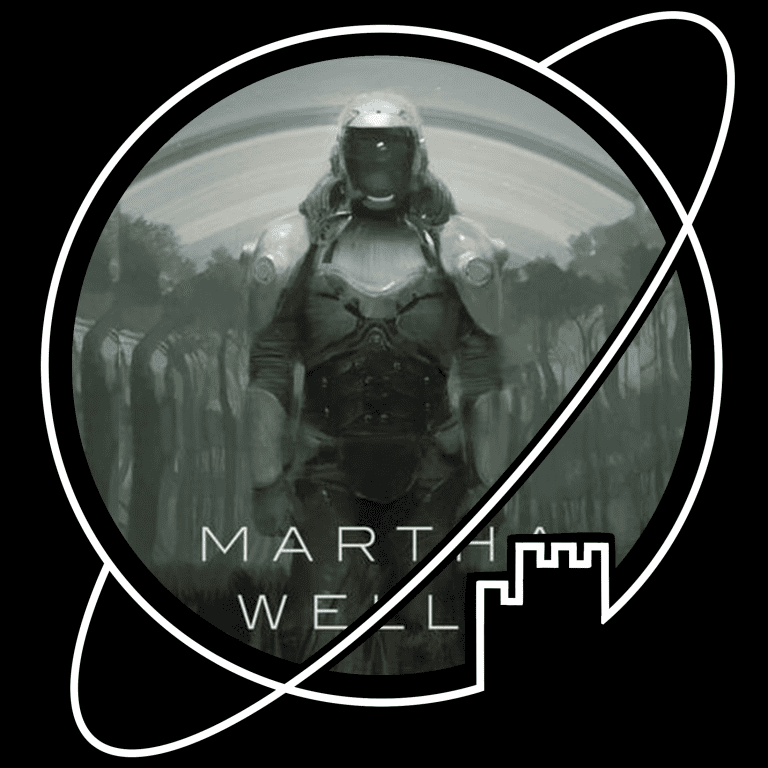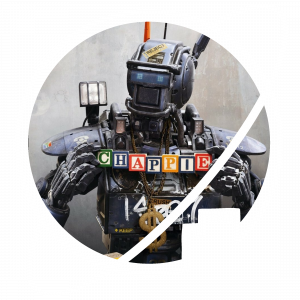Welcome to the Escape Velocity Collection!
We are an opinionated group of friends reviewing all sorts of fantasy and science fiction media. Don’t forget to get to know the curators and visit our curated Collection, where we discuss the stories that never cease to transport us to another world.
Will you escape with us?
LATEST POSTS:
- Novel written by Rebecca Yarros
- Published 5 April 2023
- Part one of The Empyrean series


I spent a couple of days in Glasgow a few weeks ago. During that trip, I spent a significant time at Waterstones, and Fourth Wing was being promoted everywhere. I couldn’t escape it. Usually, a popular book has something going for it. Unfortunately, I was already listening to the audiobook at the time and already knew that this book is bad. I’m not sure why they were marketing it so much when they could have spent that space marketing literally anything else.
Fourth Wing takes place in the country of Navarre, which is at war with another country. I don’t remember the name and it’s not important enough to be in any of the plot summaries I’ve found on Google. This all to say that the war isn’t really relevant in this story about Dragon Riders at a War College.
“Basgiath War College” is where Violet Sorrengail is sent to learn to become a Rider. If she survives, that is. Violet is the weak, weak daughter of famous General Lilith Sorrengail, and Lilith truly does not care if Violet lives or dies. Lilith, I feel ya.
The first challenge she faces is crossing a super dangerous bridge, the “parapet”. Most people don’t even make it to school, they just fall off the bridge.
Because Violet is such a weak loser, many of her fellow students want to kill her. People wanting to kill Violet for no good reason is one of the main themes in this book.
Someone who doesn’t want to kill Violet is major hottie Xaden Riorson, whose dad is known as “The Great Betrayer” for leading a rebellion against the government. Of course, Violet is convinced he wants to do her harm, but secretly he’s super into her. Half of the book is just Violet being horny for Xaden yet they have NO chemistry and NO realistic emotional buildup to their “relationship”. I guess that’s a spoiler: they eventually hook up! Who saw that coming?
Look, Yarros clearly wanted to write a book with the same kind of grim setting as The Hunger Games. A world in which young people die because the government doesn’t value their lives! What she, unfortunately, didn’t think about is the fact that you need to do good world-building for this to make sense in a story. And unfortunately, Fourth Wing does NOT have good world-building. There is no political commentary that Yarros is trying to make in this novel, or at least none that she’s trying to make properly.
At Basgiath War College, you either graduate or you die. And lots of people die during Violet’s first year at dragon rider school. Why wouldn’t the government care even a little bit about hundreds of potential soldiers dying? Probably because Yarros just needs Dragon School to be scary and dangerous for the plot. As mentioned before, the war is but a backdrop for Violet and Xaden getting it on.
A lot happens “for the plot” in this book. There are all these silly rules and inconsistencies that make zero sense until Yarros explains why they’re there: to move the plot forward. Killing your classmates is obviously fine, UNLESS they’re asleep, in which case your punishment is death. Sleeping with a superior officer is also clearly not allowed (because tension), but I suppose you would be allowed to kill them and that would be fine?? There’s a scene where Violet “bends” the rules by bringing a knife to a challenge where she’s not allowed to bring any weapons. However, because she brought this knife with her across the parapet, she argues that it’s fine, because “any object brought with a rider across the parapet is part of the rider”. All the rules feel made up to fit whatever scene Yarros wants to write.
Meanwhile, all the bad guys are comically evil. You’re gonna be a dragon rider, why are you so obsessed with killing the boring protagonist?
I can’t end this review without mentioning the elephant in the room. Fourth Wing features some “spice” as the kids call it. On the whole, there isn’t a lot of sex in this book, but the scenes that were there were awful.
The first sex scene was the worst 20 minutes of my life. I was half glad that I was listening to the audiobook because I could yell things like “noooo” and “make it stop” and the narrator would still just drag me through it. On the other hand, I might have been able to skim the scene in a paper book. This scene was TWENTY minutes of straight up smut. I hated it. It served no purpose in the book.
Fourth Wing doesn’t make me want to be a dragon rider, which I think is one of its main failings. One of the most positive things I can say about it is that at times, it is fine. However, I don’t think I’ll ever again pick up a book that gets marketed as “romantasy”.
Tagged:
See also:
- Movie directed by Yorgos Lanthimos
- Starring Emma Stone, Mark Ruffalo, Willem Dafoe, Ramy Youssef, Christopher Abbott, and Jerrod Carmichael
- Released on December 8, 2023
- Runtime: 142 minutes


I have watched this movie in the cinema three weeks ago, and I am still not entirely sure what I think of it. Visually it is certainly stunning, and I did enjoy the quirky style of cinematrography. However, when it comes to comparing it with the book I am a bit hesitant.
One of the strong points of the book is that it offers you different versions of the story, and makes you question which version is the truth. This element is completely taken out of the movie, and it therefore misses this very interesting dimension. Due to the eccentric style of the movie the charaters became even more of a caracature than they already were in the book, and therefore less realistic. While still interesting to look at, this made it even harder to truly identify with them as a viewer.
Female sexuality is an integral part of the book and so the sex scenes could not have been left out, but watching them on a big screen definitely felt more uncomfortable then only reading about them. This in itself is not necessarily a bad thing, not all movies have to be comfortable. And yet I am finding myself doubting what message the movie was actually trying to bring across, and whether it succeeded in this. For example, although the movie did show one whole naked penis (contrary to the vast majority of other movies), there was still significantly more female nude on the screen. In my opinion, this took something away from the feminist message that (I assume) it was trying to portray.
All in all it left me with quite some questions, but I vastly prefer a movie that makes you think over a movie that does nothing new. So if you are in for a bit of an experiment, go see it! But if you do, don’t make the same mistake that I did: unless you are from a very open minded family, this might not be the best movie to go see together with your parents.
Tagged:
See also:
- Book written by Adrian Tchaikovsky
- Published 2 November 2017
- Followed by Bear Head


Listened to the audiobook with William Hope, Laurence Bouvard and Nathan Osgood – a nice mix for the different perspectives.
My rating on Dogs of War is probably skewed by a personal pet peeve, which is that – for whatever reason – I’ve never been able to suspend my disbelief on anthropomorphic human-animal hybrid bio-engineered super soldiers. I have never been able to believe that we could make that work, or that the resulting creatures would actually be better at warfare than either humans or animals.
Bio-engineered human-dog hybrids have always felt like children’s cartoon-level villainy to me, and that makes it tough for me to take a book like Dogs of War seriously. I am going to have to admit that I put this book on without reading the blurb, and I probably would not have picked it up had I known.
Dogs of War was a relatively short read for the speculative genre (just under 10 hours of listening at 1x speed), so I decided to push on through, just to see what I would make of it. Had it been one of these 25 hour epics, I probably would not have finished.
Tchaikovsky’s core themes in Dogs of War are acceptance and tolerance and fear of the unknown. In this case, it is about the acceptance of hybrid bioforms in human society. The message is clear: these animal-human hybrids deserve our compassion and acceptance. The implication is that people who fail to see the bioforms as human, are bigoted.
One difficult aspect of Dogs of War is that the bioforms, the group it wants you to root for, are by their nature very alien. It takes preaching acceptance and inclusion to an extreme. That is an interesting premise, I’ll admit, but I didn’t feel like Tchaikovsky made it work fully.
Dogs of War’s main villain treats his bioforms like objects – tools or obstacles. This is cast in contrast with other human characters, who see the bioforms as individuals deserving of individual dignity. That would appear to set up the central conflict, but the problem is that the main villain also treats humans as nothing other than tools and obstacles. He lacks any compassion towards anyone at all. His treatment of bioforms and humans hardly differs. The main villain therefore doesn’t really do much for the central theme.
Which leaves the question of the acceptance of bioforms in human society unfortunately on the sidelines. There are a couple of scenes and narratives describing humans’ difficulty in interacting with the hybrid bioforms, but these are few and far between, even though these should maybe have been central to the book.
The main reason, I feel, humans fail to accept bioforms is not that the bioforms committed atrocities in war – humans, too, commit atrocities in war. The main reason is that bioforms are alien to us, and scary. And that aspect, while present, is left underdeveloped in the book. I can’t go into the conclusion without spoilers, but I ended up feeling the resolution was just slightly unearned.
So, what did I think? The bottom line is that it is a fine novel, but that it failed to grip me.
On a side note, I have to mention that Tchaikovsky includes a couple of scenes at the International Criminal Court in Dogs of War, and I was pleasantly surprised to find that he had figured out the concept of command responsibility, which played a central role in a couple of chapters. He might miss the mark on a number of other aspects of the ICC, but getting that one important detail right earns him high praise from me!
- Novel written by Alasdair gray
- Published 1992


Poor Things is such an ambitious book that I feel like I need to reread it at least once before I will be able to fully comprehend it. But even in the first read-through I already very much appreciated how skillfully crafted this story is.
The book is written in the style of a Victorian novel, with an intricate narrative structure. The various stories within stories have the purpose of making you doubt the reliability of the different narrators. Therefore, from the very beginning you are forced to question everything that you are reading, and to decide for yourself which version of events you believe.
The many references to Frankenstein, Jane Eyre and other famous texts serve to support the books themes of female agency, freedom and sexuality. But here too the book refuses to provide easy answers, forcing the reader to do a lot of the thinking for themselves and to make up their own mind.
Apart from the structure of the story, the book also plays around with language itself. My favourite example of this is the evolution of Bella’s speech, as this is where Alasdair Gray really gives free rain to his ability to engage and experiment with language.
The story is in many ways alligorical, which results in some of the characters being somewhat of a caricature. While this fits to book and it’s purpose, it does mean that the readers are kept at more of a distance to the characters, not really being able to fully identify with them. Nevertheless, I found enough to puzzle over in this book that this did not keep me from enjoying it.
The book is very different in tone compared to its 2023 movie adaptation, so if you saw the movie and did not enjoy it, that does not necessarily mean that you will not enjoy the book. I would definitely recommend it to any lovers of either Victorian(-style) or feminist literature.
- Book written by Robert A. Heinlein
- Published 2 June 1966
- Standalone


I love the classics of the genre, and if I have ever talked to you about science fiction, you will know that I am always explaining that ancient sci-fi novels are worth reading because they are still relevant to the present day. Still, even I am sometimes surprised myself exactly how true that statement can be.
The Moon is a Harsh Mistress is closing in on its 60th birthday. The overarching theme – of a population rising up against their oppressor – is as old as time, and will no doubt be recognisable for as long as people will be able to read. That is not what I am referring to, however. The Moon is a Harsh Mistress also delves into AI, deepfakes avant la lettre, polyamory, and gender – topics that may be more relevant now in 2024 than they ever were in 1966.
I will admit that Heinlein can be relatively crude about these issues – I don’t find his writing particularly thought-provoking because it lacks a little in subtlety (looking at you, Starship Troopers). There is a certain self-righteousness in Heinlein’s works, a certain conviction that doesn’t always feel like just the characters’.
In The Moon is a Harsh Mistress, the main character Manny’s dry cynicism can be a bit off-putting, though I do find it a charming way to introduce certain topics as extremely normal and hardly worth mentioning – such as the complex polyamorous family structure he is a part of. It is contrasted nicely with Wyoh’s rebellious fervour. But I never really liked the supposedly brilliant co-conspirator professor De la Paz’s platitudes about the evil of government and the virtues of self-organisation. He feels just a little too much as a conduit for Heinlein’s own political ideas. It is in fact the moments when Heinlein is consciously delving into the politics of building a nation that I think The Moon is a Harsh Mistress is at its weakest.
Perhaps that is simply a matter of space: Kim Stanley Robinson’s Mars Trilogy is not dissimilar to The Moon is a Harsh Mistress in some ways; though being a trilogy of books triple the size of Heinlein’s work certainly helps in establishing the Martian independence movement and the politics of the solar system in that.
Fortunately, The Moon is a Harsh Mistress has more than enough to offer besides the supposed wisdom of professor De la Paz. In particular, the AI Mike is a delight to read. His development as a character is central to the story, and I think Heinlein does a great job of making his interactions with the human characters believable. I like that Mike could probably have been really frightening, but never comes across as such in the story (though that is probably a matter of perspective).
Overall, The Moon is a Harsh Mistress is a surprisingly relevant classic that is well worth the read for its interesting characters and the tension of its plot, if perhaps not for its politics.
- Movie directed by Juan Carlos Fresnadillo
- Starring Millie Bobby Brown, Ray Winstone, Nick Robinson, Shohreh Aghdashloo, Angela Bassett and Robin Wright
- Released on March 8, 2024
- Runtime: 110 minutes


I had heard some rumors about this movie maybe being not so good, but avoided reading any reviews before going into it. I’m glad I did because I actually really enjoyed Damsel.
Damsel isn’t a masterpiece. But I would argue it’s not trying to be. This movie was clearly meant to be a subversion of a classic fairy tale. Girl gets sacrificed to a dragon, but lo and behold, she’s strong enough to save herself. Much like the fairy tales this movie takes its queues from, Damsel really isn’t that deep. I heard people complaining that Elodie’s father and stepmother don’t even get named. To me, however, this to me is another indication that this is really just supposed to be a classic story about a princess from a far away land.
I really enjoyed the themes of this movie. It’s very much about standing on the shoulders of women who came before you; how sometimes you can’t save yourself, but the work you did to help yourself can still help others. The movie is is both about literal and metaphorical sisterhood. It’s also about not being afraid to burn shit down. Once again, are the themes super well developed? No. But they’re developed enough to be defensible.
The ending of the movie is pretty predictable, but the way they get there is quite twisty and turny. I do have to admit that it gets frustrating at times, because you know how it’s going to end. However, at the end I did feel like the steps the movie takes to get to its ending serve a purpose. If Elodie just did the logical things that you as a viewer keep shouting at her to do she a) wouldn’t have defeated the dragon (which was kinda what the movie is about) and b) she could have died anyway.
I have mixed feelings about Millie Bobbie Brown’s acting in this movie. On the one hand, she manages to carry this movie really well. On the other hand her line delivery seems super stilted at times. I don’t know if I can really blame her for that. Most of the time she’s just kind of talking to herself. It has something viedeo game-y to it.
Overall I saw enough positives to recommend this movie. Just don’t expect the most elaborate story or developed characters.
Already before the release of Damsel, I had heard some very positive reviews that made me excited to watch this movie. In all fairness, I probably would have been thrilled anyway, because it is a fantasy movie with a dragon (!!!) and Millie Bobby Brown. However, shortly after its release, some lukewarm reviews dampened my initial drive to go and watch it. It took me a week or two to come to the conclusion I should just form my own opinion (and thereafter write a review for others to take to heart or ignore :p ).
Going in, I had a vague idea about what to expect: a dragon and a subversion of the ‘damsel in distress’ trope. I think the movie does a decent job at keeping you somewhat in the dark in the first act of the story. You know something is going to happen when the protagonist (Millie Bobby Brown) and her family move to their soon te be in-laws. The athmosphere is off, everything too good to be true. And where is that dragon from the beginning hiding? It’s an intruiging mystery. I thinks this set-up not only works when you have a good grasp of the traditional role of dragons in faerie tales and the usual story structures, but also when you go in blind.
The first plot twist, however, did not really surprise me. Frankly, I was a little impatient with the protagonist for her low ‘sense motive’ rolls (excuse my Pathfinder jargon). I couldn’t really stay mad, though, because of reasons I will soon elaborate on. First, I want to mention another thing I thought was interesting on a meta level. After the aforementioned plot twist, the tone of the movie suddenly changes into something very similar of a classical horror movie. I quite liked that, though it didn’t make the rest of the story less unpredictable in the end.
The absolute best part of this movie, for me at least, is undoubtedly the dragon. A whole star of this review is dedicated to her; I was squealing in delight every time she showed up. Menacing, beautiful and at times unneccesary brutal. She really felt like a terrifying predator. And because – unlike the protagonist – I had rolled very high on my perception and sense motive checks, I was absolutely rooting for her from the beginning. In the end, I was pleasantly surprised to see that her story took the turn I hoped it would take. All in all, Damsel’s dragon was a perfect example of why I like dragons in the first place.
As for Millie Bobby Brown’s acting, I must confess I was less impressed. I find it hard to pinpoint the specific reason why, but during the whole movie I just felt her performance was less convincing than what I’ve seen from her in Stranger Things and the Enola Holmes movies.
Ultimately, I didn’t think the plot and the themes of Damsel were as strong as they could have been. Though there’s enough of an ancient Greek deity in me to greatly appreciate the downfall of people due to their hubris, most of Damsel’s characters didn’t get enough spotlight to make me feel many emotions about their fate. Similarly, the feminist message of the story felt a little underwhelming to me.
Still, Damsel does more than enough good things to make it worth your while. The dragon, for example. So go watch it!
Tagged:
See also:

Review: Fourth Wing – Rebecca Yarros
Violet Sorrengail has spent her entire life training to be a scribe like her father, but when conscription day comes around, her mother forces her to join the Rider’s Quadrant. Because she’s so small and weak, Violet has to use all her wit to survive and one day become a dragon rider like her mother and sister. Meanwhile, she finds herself impossibly attracted to the son of her mother’s worst enemy.

Review: Poor Things – Yorgos Lanthimos
In this thought-provoking twist on Frankenstein, the drowned body of a young woman is brought back to life with the brain of her unborn infant. The result of this scientific experiment is Bella Baxter (portrayed by Emma Stone). Unbound by the societal norms of her era, Bella becomes resolute in her mission to advocate for equality and freedom.

Review: Dogs of War – Adrian Tchaikovsky
Rex is a dog-human hybrid, a bioengineered supersoldier known as a bioform, serving alongside a number of other human-animal hybrids in a private security company engaged in the supression of an uprising in Mexico. When he loses connection to his master on a mission, he and his team are faced with difficult questions on their role in the war and the world beyond. The world, meantime, is faced with exactly the same questions.

Review: Poor Things – Alasdair Grey
In Alasdair Gray’s thought-provoking twist on Frankenstein, the drowned body of a young woman is brought back to life with the brain of her unborn infant. Through humor and satire, Gray pokes fun at the classic Victorian novel while offering a profound commentary on politics and gender dynamics.

Review: The Moon is a Harsh Mistress – Robert A. Heinlein
Manny is a computer engineer in charge of programming Mike, the central supercomputer running the systems of Earth’s penal colony on the Moon. Unbeknownst to anyone but Manny, Mike has achieved self-awareness. Mike mainly wants to learn to understand human humour, but when the AI meets political activist Wyoming Knott through Manny, the three of them start speculating on an uprising that would free Luna from the yoke of the Warden and the Federated Nation’s Lunar Authority.

Review: Damsel – Netflix
Elodie, the daughter of a Lord, agrees to marry the prince in order to secure a better future for her people. The union seems like something out of a classic fairy tale, but a terrible secret will soon be uncovered…
























